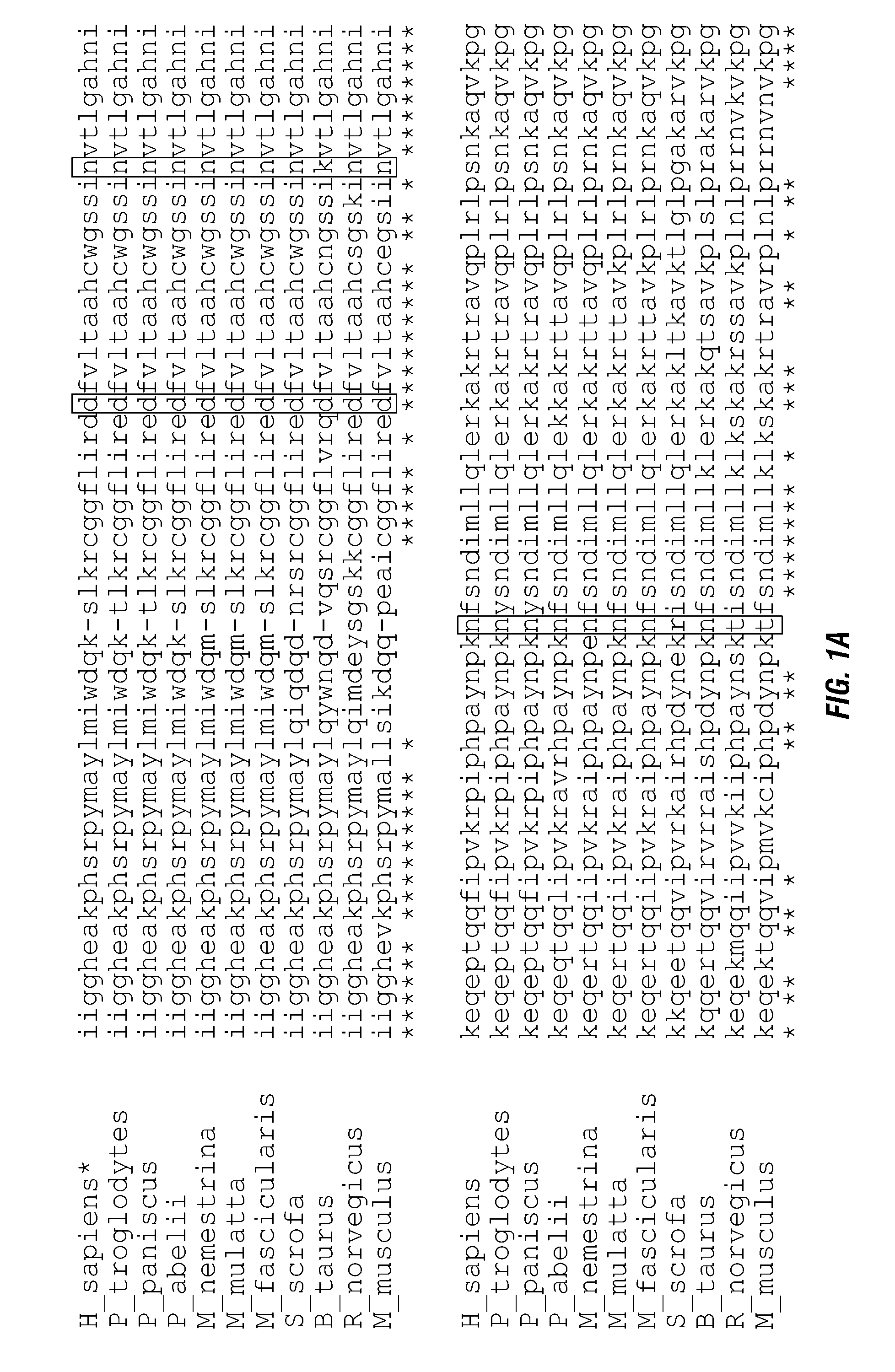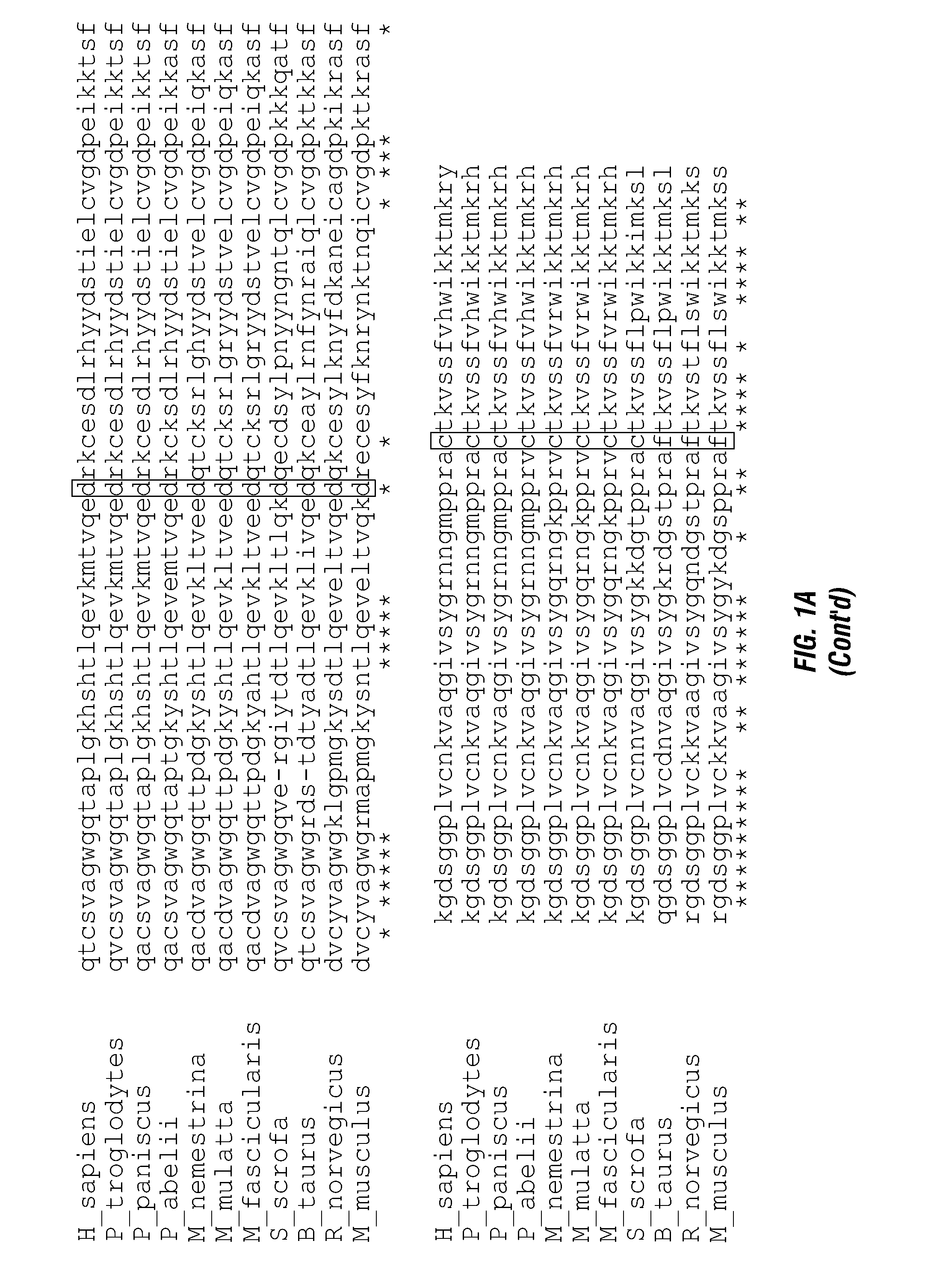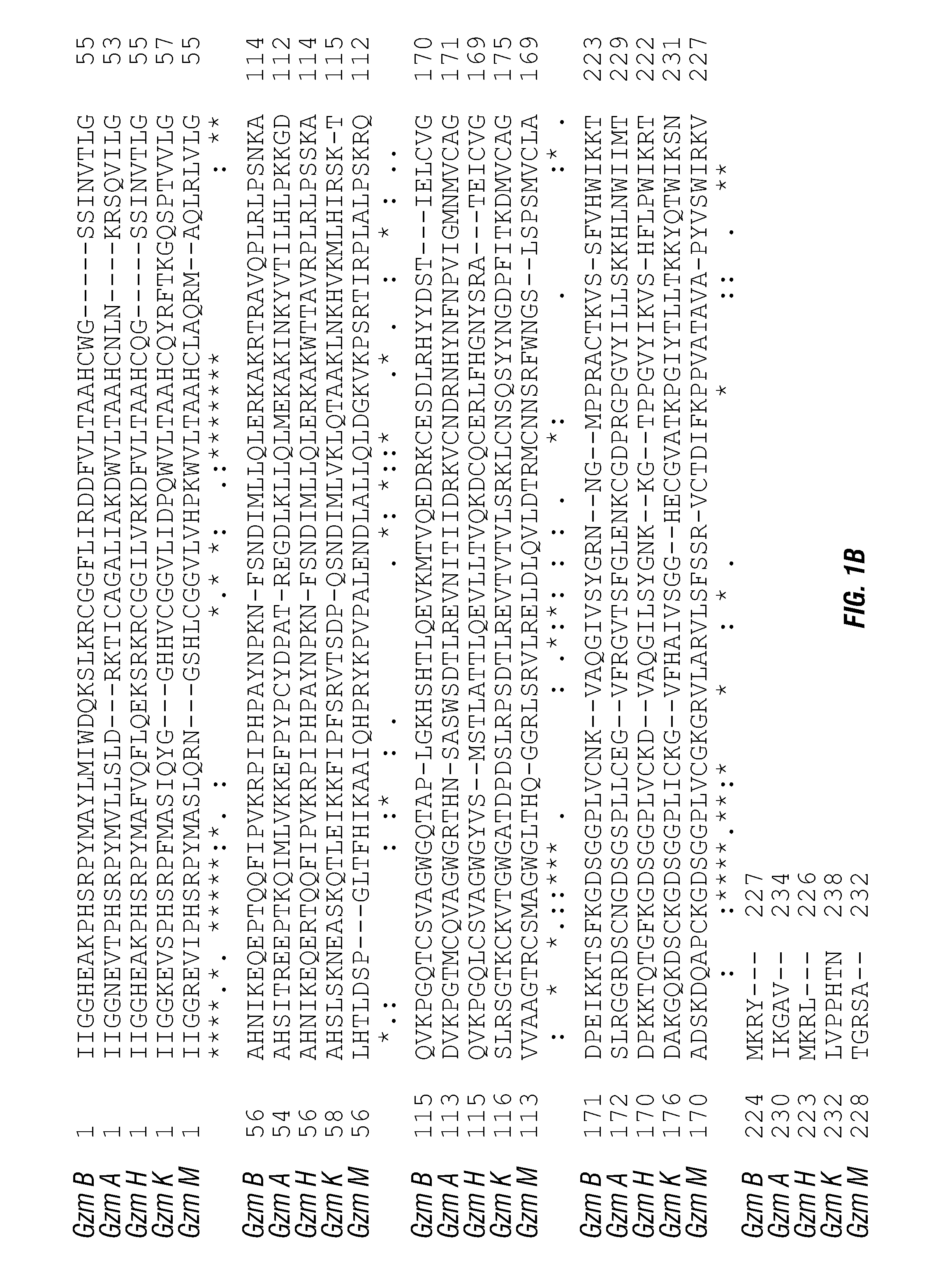Serine protease molecules and therapies
a serine protease and molecule technology, applied in the field of molecular biology and recombinant protein production, can solve the problems of limiting the implementation of successful therapies, and achieve the effect of reducing potential interference of cell targeting polypeptides and enhanced intracellular activity of targeted serine proteases
- Summary
- Abstract
- Description
- Claims
- Application Information
AI Technical Summary
Benefits of technology
Problems solved by technology
Method used
Image
Examples
example 1
Testing of GrB-VEGF Fusion Constructs
[0162]Four different fusion constructs were generated using wild-type (native) human GrB (WT), a mutant with the potential self-cleavage domain deleted (A), a mutant with one glycosylation domain mutated (N1) and a version combining the two mutations (A, N1). The constructs were generated by PCR, the mutations were confirmed by DNA sequencing and the proteins were transfected into mammalian expression cells. The proteins were expressed and purified. In vitro assays with the expressed polypeptides show similar levels for enzymatic activity (FIG. 3). The fusion proteins were then used to treat transfected endothelial cells expressing the VEGFR-2 receptor (PAE / VEGFR-2) or a control (PAENEGFR-1) cell line. Results of the studies are shown in Table 1. Values shown are the IC50 values in nM.
TABLE 1Cytotoxic effects of GrB / VEGF121 fusion constructvariants on transfected endothelial cells.Target cellWTAN1A, N1PAE / VEGFR-2 (+)15.312.211.619.6PAE / VEGFR-1 (−...
example 2
Investigation of Linker Effects on GrB Activity
[0164]GrB-ZME(VL-VH) fusion proteins were constructed as indicated above using different linkers between the GrB and ZME sequences. The construct SL used the G4S linker; LL was four repeats of the HL (EAAAK) linker and X was a G4S+218 linker. All linkers showed specific cytotoxic effects against target cells. The construct containing the shortest flexible linker demonstrated the best cytotoxicity (lowest IC50) against target cells as shown in Table 2. Thus, the studies indicate that short linkers may produce more effective therapeutics.
TABLE 2Cytotoxic effects of GrB / ZME fusion constructs relativeto target cells. AAB-527 and A375-M were specifically targetedby ZME, whereas SKOV3 was a non-specific control.Target cellSLLLXGrB aloneAAB-5275448171148>2000A375-M72211242228>2000SKOV379516672363>2000values indicate IC50 (nM)
example 3
Effect of GrB Glycosylation on Targeting Construct Activity
[0165]Two glycosylation sites were identified within the GrB molecule (d1 and d2) and modified the GrB / scFvMEL fusion construct as detailed above and as shown in FIG. 4 (d1 indicates N51S; d2 indicates N84A). Each glycosylation site was modified and then a molecule containing both modifications was generated. The individual modifications had little effect on in vitro GrB enzymatic activity (see, e.g., FIG. 4). However, as shown in Table 3, removal of each of the glycosylation sites generated a molecule with a lower IC50 than the original wild-type-containing GrB. There was little impact on the non-specific cell line (SKOV3).
TABLE 3Cytotoxic effects of GrB / ZME fusion constructs relativeto target cells. SL is WT GrB, SL-1 includes the d1mutation; SL-2 includes the d2 mutation; and SL-3 isd1 and d2. AAB-527 and A375-M were specifically targetedby ZME, whereas SKOV3 was a non-specific control.Target cellSLSL-1SL-2SL-3AAB-5275442...
PUM
| Property | Measurement | Unit |
|---|---|---|
| time | aaaaa | aaaaa |
| humidity | aaaaa | aaaaa |
| humidity | aaaaa | aaaaa |
Abstract
Description
Claims
Application Information
 Login to View More
Login to View More - R&D
- Intellectual Property
- Life Sciences
- Materials
- Tech Scout
- Unparalleled Data Quality
- Higher Quality Content
- 60% Fewer Hallucinations
Browse by: Latest US Patents, China's latest patents, Technical Efficacy Thesaurus, Application Domain, Technology Topic, Popular Technical Reports.
© 2025 PatSnap. All rights reserved.Legal|Privacy policy|Modern Slavery Act Transparency Statement|Sitemap|About US| Contact US: help@patsnap.com



